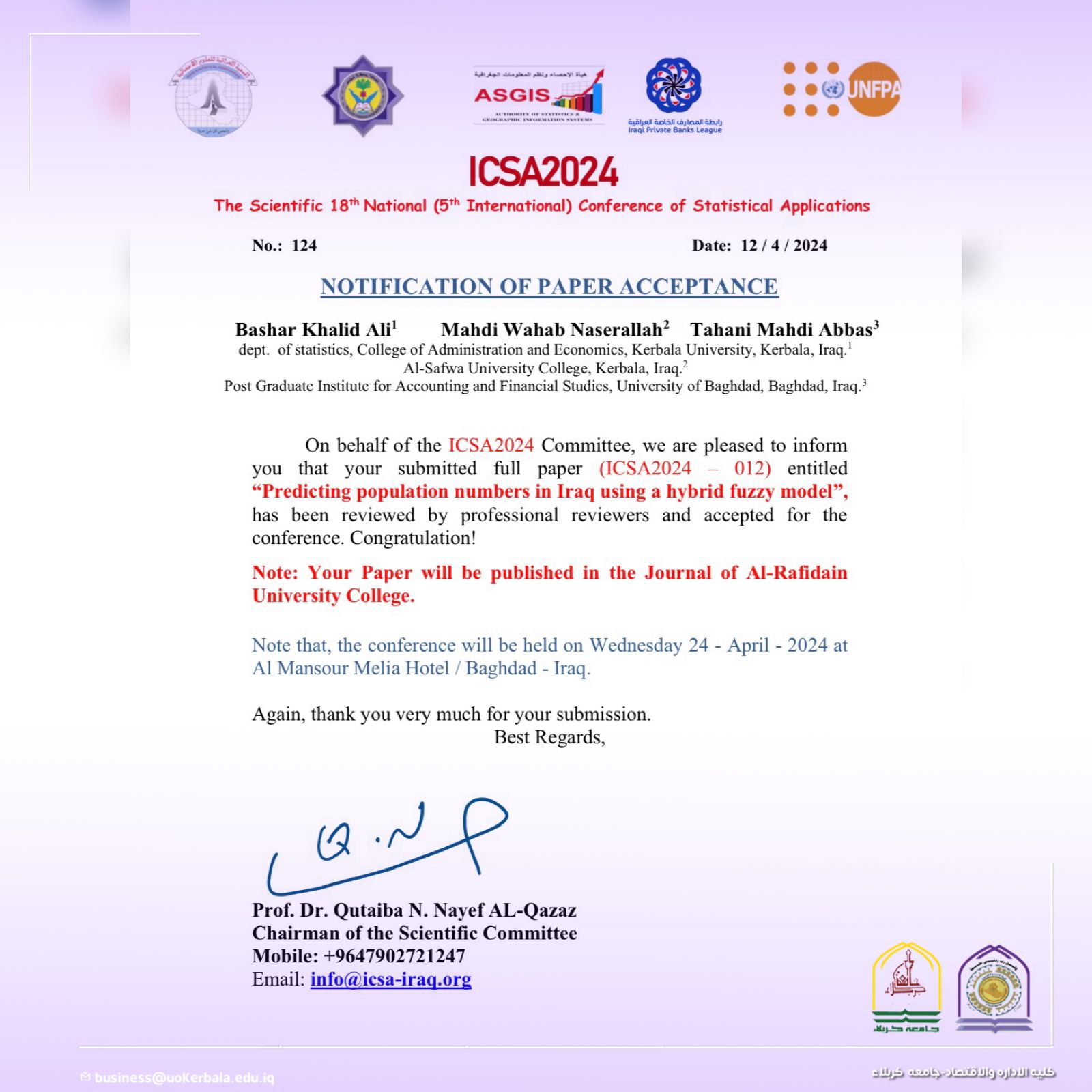A Lecturer From Collage Of Administration And Economics /Karbala University (Dr. Bashar Khalid Ali Hussein AlHallaq, Dr. Mahdi Wahab Nea’ama Khadum Naserallah and Dr. Tahani Mahdi Abbas Alyaseri) Has Published A Scientific Study About Predicting population numbers in Iraq using a hybrid fuzzy model
In
Journal of AL-Rafidain University College for Sciences – Iraq
The Integrated mixed model (ARIMA) is a popular model for forecasting unstationary linear time series that combines the autoregressive (AR) model and the moving average (MA) model by including the integral part that changes the time series to make it stable. At the same time, prediction with hidden artificial neural networks (HANNs) is an alternative to linear methods. But often we encounter complex data, which means that there are two or more main components in the data, a linear component and a non-linear component, and these components can be interwoven together so that the overall effect is a mixture of the two effects, with each component having its own effect on the data. Also, we may find time series observations in the real world that suffer from inaccuracy in their measurements, and one of these phenomena is the population numbers in Iraq from 1978 to 2023, the majority of which depends on estimation and no accurate measurements are available. In this research, a fuzzy hybrid time series forecasting method (FHHAA) was proposed, a mixture of the (FARIMA) model and the (HANNs) model, then forecasting the population numbers in Iraq and comparing the proposed model with the (FARIMA) model, the (HANNs) model, (HANNs) and the non-fuzzy hybrid model using comparison criteria, Root Mean Square Error (RMSE), Bayesian Akaike Information Criterion (BIC). It was concluded that the proposed Fuzzy Hybrid Model (FHHAA) is better than the basic models because it recorded the lowest criteria’s. The estimated values of population numbers were more consistent according to the (FHHAA) model. The population numbers in Iraq were predicted for the years (2024-2028), and it was shows an increase in the population from the year (2023) by approximately (6,940,432) people by the year (2028).




























































